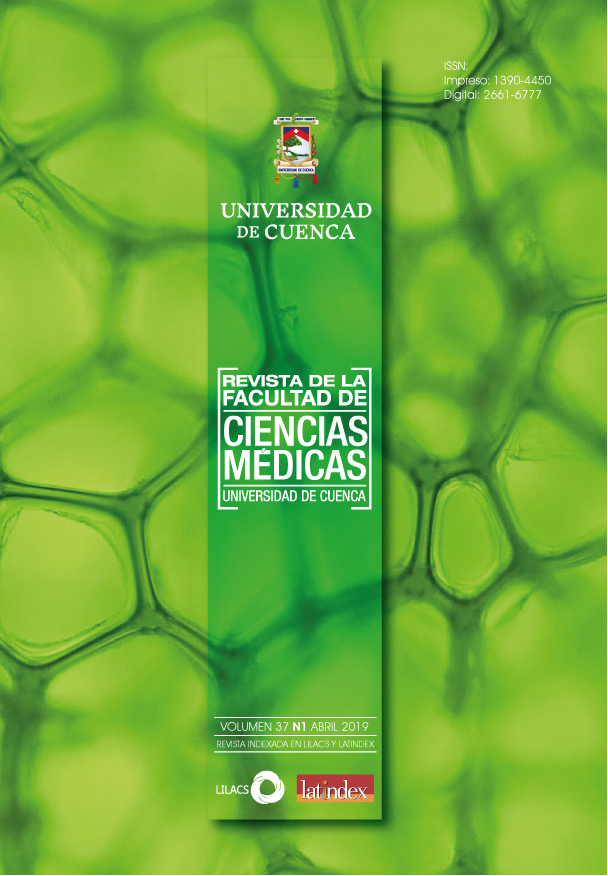Bacteriemia in cancer patients at the SOLCA Cancer Institute. Cuenca, 2011-2016
DOI:
https://doi.org/10.18537/RFCM.37.01.04Keywords:
bacteremia, cancer care facilities, inpatients, blood culture, neoplasms, drug resistance, microbialAbstract
ABSTRACT
Objective: To characterize the episodes of bacteremia, the causative microorganisms and their patterns of sensitivity in patients treated at the Cancer Institute SOLCA - Cuenca, Ecuador.
Methodology: A descriptive design was applied. The study focused on all episodes of bacteremia occurred in the period 2011-2016, they were verified by blood cultures. The variables studied were age and sex of the patients in whom the bacteremia occurred; type of tumor, microorganism, time of positivization and resistance profile.
Results: A total of 318 episodes were identified. The 66.8% of the isolated microorganisms were gram-negative bacteria and 33.2% gram-positive; the most prevalent were Escherichia coli 37.3%, Staphylococcus aureus 17.9%, Klebsiella.spp 9.3%, Staphylococcus coagulase negative 7.2% and Pseudomonasaeruginosa 5.1%. In gram-positive cocci, methicillin resistance was 40% in Staphylococcus.aureus and 67% in coagulase-negative Staphylococcus; Escherichia.coli and Klebsiella pneumoniae were resistant to third-generation cephalosporins by 29% and 47% respectively, compatible with the extended-spectrum beta-lactamase phenotype; the resistance to quinolones was 35% and 50% respectively.
Conclusions: the gram-negative bacteria were the most prevalent microorganisms in this study, mainly the enterobacteria, with an important resistance to the antibiotics tested.
Key words: bacteremia, cancer care facilities, inpatients, blood culture, neoplasms, drug resistance, microbial.
Downloads
Published
Issue
Section
License
Copyright © Autors.

You are free to:
 |
Share — copy and redistribute the material in any medium or format |
 |
Adapt — remix, transform, and build upon the material for any purpose, even commercially. |
Under the following conditions:
 |
Attribution — You must give appropriate credit, provide a link to the licence, and indicate if changes were made. You may do so in any reasonable manner, but not in any way that suggests the licenser endorses you or your use. |
| NonCommercial — You may not use the material for commercial purposes. | |
| ShareAlike — If you remix, transform, or build upon the material, you must distribute your contributions under the same license as the original. |
| No additional restrictions — You may not apply legal terms or technological measures that legally restrict others from doing anything the licence permits. |






